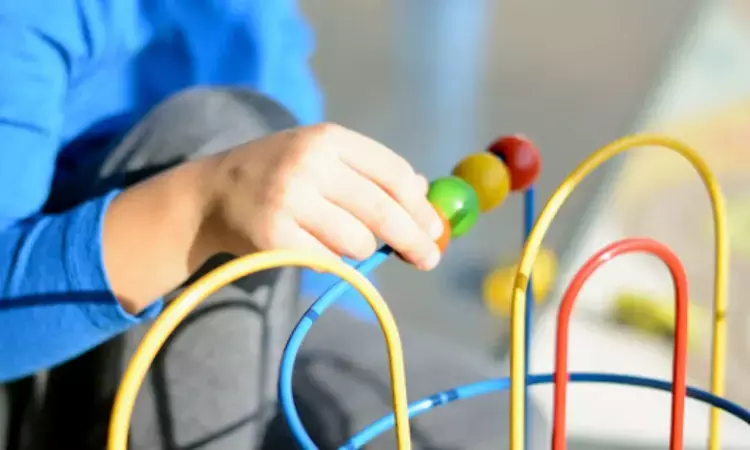- Home
- Medical news & Guidelines
- Anesthesiology
- Cardiology and CTVS
- Critical Care
- Dentistry
- Dermatology
- Diabetes and Endocrinology
- ENT
- Gastroenterology
- Medicine
- Nephrology
- Neurology
- Obstretics-Gynaecology
- Oncology
- Ophthalmology
- Orthopaedics
- Pediatrics-Neonatology
- Psychiatry
- Pulmonology
- Radiology
- Surgery
- Urology
- Laboratory Medicine
- Diet
- Nursing
- Paramedical
- Physiotherapy
- Health news
- Fact Check
- Bone Health Fact Check
- Brain Health Fact Check
- Cancer Related Fact Check
- Child Care Fact Check
- Dental and oral health fact check
- Diabetes and metabolic health fact check
- Diet and Nutrition Fact Check
- Eye and ENT Care Fact Check
- Fitness fact check
- Gut health fact check
- Heart health fact check
- Kidney health fact check
- Medical education fact check
- Men's health fact check
- Respiratory fact check
- Skin and hair care fact check
- Vaccine and Immunization fact check
- Women's health fact check
- AYUSH
- State News
- Andaman and Nicobar Islands
- Andhra Pradesh
- Arunachal Pradesh
- Assam
- Bihar
- Chandigarh
- Chattisgarh
- Dadra and Nagar Haveli
- Daman and Diu
- Delhi
- Goa
- Gujarat
- Haryana
- Himachal Pradesh
- Jammu & Kashmir
- Jharkhand
- Karnataka
- Kerala
- Ladakh
- Lakshadweep
- Madhya Pradesh
- Maharashtra
- Manipur
- Meghalaya
- Mizoram
- Nagaland
- Odisha
- Puducherry
- Punjab
- Rajasthan
- Sikkim
- Tamil Nadu
- Telangana
- Tripura
- Uttar Pradesh
- Uttrakhand
- West Bengal
- Medical Education
- Industry
High dose constraint-induced movement therapy effective for cerebral palsy in children: Study

USA: In a new study conducted by Sharon Landesman Ramey and team, it was shown that although most individual blinded outcomes fell below statistical significance for group differences, high-dose Constraint-Induced Movement Therapy (CIMT) consistently provided the biggest gains at both time periods, according to the Children with Hemiparesis Arm and Hand Movement Project (CHAMP). The findings of this study were published in the journal Pediatrics.
The objective of this study was to assess the efficacy of Constraint-Induced Movement Therapy for cerebral palsy children. For this, researchers contrasted two dosages and two constraint types CIMT to standard care (UCT).
The study was designed intricately where, CHAMP randomly allocated 118 2- to 8-year-olds with hemiparetic cerebral palsy to one of five therapies, with evaluations at the beginning, end, and 6 months after treatment. The helping hand evaluation, Peabody Motor Development Scales, Second Edition, Visual-Motor Integration, and Quality of Upper Extremity Skills Test Dissociated Movement were the primary blinded outcomes. Next parameter was the Pediatric Evaluation of Disabilities Inventory-Computer Adaptive Test Daily Activities and Child Motor Activity Log How Often scales were used by parents to rate functioning. The analyses concentrated on blinded and parent-reported outcomes, as well as rank-order increases across all measures.
When assessing individual blinded results, the statistical significance of this work varied. parent reports, as well as rank-order gains High-dose CIMT consistently created a pattern of highest short- and long-term gain and considerable increases on visual-motor integration and dissociated movement at 6 months, independent of restriction type. According to O'Brien's rank-order analysis, high-dose CIMT caused much more improvement than a moderate dosage or UCT. When compared to UCT, all CIMT groups improved much more in parent-reported functioning. Children with UCT showed objective increases as well.
In conclusion, this study's surprise discovery involves adjustments in UCT doses toward greater dosages, with superior outcomes as compared to earlier findings.
Reference:
Ramey, S. L., DeLuca, S. C., Stevenson, R. D., Conaway, M., Darragh, A. R., & Lo, W. (2021). Constraint-Induced Movement Therapy for Cerebral Palsy: A Randomized Trial. In Pediatrics (Vol. 148, Issue 5, p. e2020033878). American Academy of Pediatrics (AAP). https://doi.org/10.1542/peds.2020-033878
Medical Dialogues consists of a team of passionate medical/scientific writers, led by doctors and healthcare researchers. Our team efforts to bring you updated and timely news about the important happenings of the medical and healthcare sector. Our editorial team can be reached at editorial@medicaldialogues.in.
Dr Kamal Kant Kohli-MBBS, DTCD- a chest specialist with more than 30 years of practice and a flair for writing clinical articles, Dr Kamal Kant Kohli joined Medical Dialogues as a Chief Editor of Medical News. Besides writing articles, as an editor, he proofreads and verifies all the medical content published on Medical Dialogues including those coming from journals, studies,medical conferences,guidelines etc. Email: drkohli@medicaldialogues.in. Contact no. 011-43720751


